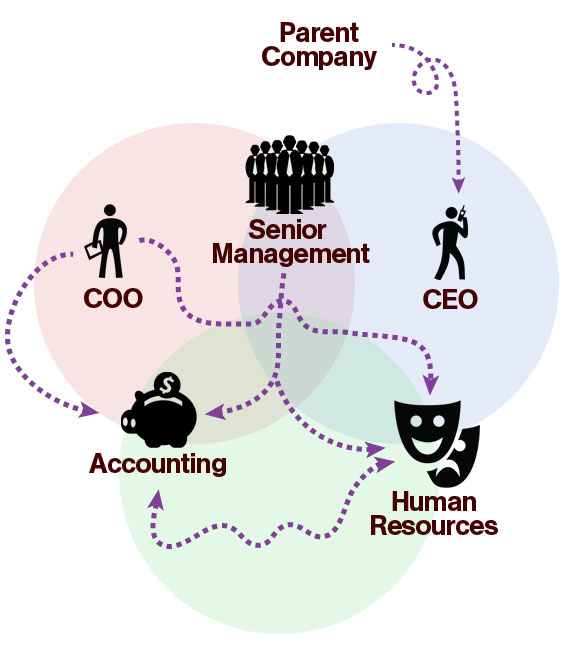The most needed skill is the ability to solve problems—especially people problems.
Today’s business environment is a greenhouse for conflict: a heterogeneous work force growing more diverse by the day, intense competition at home and abroad, an economy which could go either way. Add to this the highly diverse and dynamic field of internal auditing, which because of the very nature of the work, creates the overwhelming potential for conflict.
No matter how much you learn about conflict, no matter how excellent your skills become in handling it, no matter how great a master you are at even avoiding it, the truth is you’ll never get rid of conflict. Anytime you get two people together who think they’re even halfway intelligent, you’re bound to have some differences of opinion.
But here’s good news, too. Even if you can’t totally rid yourself of opposition from and between others, there is much that you can learn to do to manage these conflicts. We grow the most through learning how to work through our differences. We learn we can disagree with someone but still like him—or at least respect him. We see that the best friendships and the most creative working relationships are those that allow differences of opinion. The six steps below will increase your ability to work through differences with others in all areas of your life and restore the ability to be a team in the workplace and at home.
Prepare
If there is one thing I have learned in my life, it is to try not to speak or to take action out of anger. That’s pretty difficult, because like many people, I am most encouraged to give a piece of my mind when I am hot under the collar. Unfortunately, my mind is definitely on hold when the emotions take over, and when reason finally returns, I invariably regret having given in to impulse.
Whenever possible, put distance and time between your reaction and action so that you can let sanity return to think things through. If there is a way to give both you and the other party time to cool off when tempers flare, do so. The best way to prepare yourself when you know you are going to meet with someone where emotions will be high is to do a “dump sheet.” Take a legal-size pad of paper and pen and find a place where you can be alone for five to ten minutes (that might be the hardest part). Then write down all your thoughts, feelings, beliefs, concerns, worries, anxieties, emotions, hates, biases, prejudices, nasty words—anything and everything that is on your mind and in your heart at the time. Do not censor anything. It is critical to get it all out on the paper.
Doing a “dump sheet” allows you to move from a subjective place to a position of objectivity. It allows you to see what is really bothering you and why, to see if you are making a mountain out of a molehill, and to see the best strategy you can take with the person to whom you will be talking. Once you have done your “dump sheet,” the best course of action will become clear to you.
Clarify the problem
When you do sit down to discuss differences, it will be to your advantage to state your case briefly, perhaps with documentation, and then ask for the other side of the story. Try as much as possible to suspend all feelings and judgments and give the other person a fair trial in your mind. At this stage, the goal is to get communication going, not to make any final decisions. If you have a person who is reluctant to open up, ask sincere, open-ended questions related to the situation. Good open-ended questions are, “What do you see the problem to be?” or “Your opinion is important: what do you think?” Then sit still and say nothing. Let there be silence. Eventually, they will realize they won’t get away with a mere “Yes,” “No,” or “I don’t know.”
Asking questions and being genuinely interested in the other person’s feelings about the situation are critical to getting to the root of a problem. But the single most powerful communication tool to use for reestablishing rapport and getting to the truth is to paraphrase. You may not agree with their point of view, but you are really trying to see it from their vantage point. That will encourage them to do the same.
Study after study shows that frequently summarizing what the other is saying when in conflict does more than any other communication skill to promote harmony and reestablish rapport. In fact, when extremely successful sales people were studied closely to see what made them different from the average salesperson, they found that the superior salesperson paraphrased and summarized an average of four times in a seven to eight minute conversation.
Seek areas of agreement
Once you have gotten all sides of the story, it is now time to see if you and the other party have any areas of agreement. One thing I have learned is to take a big sheet of paper (those legal-size pads really come in handy), put a dividing line down the middle, and together list the issues you agree on and those you don’t. If it is in your interest to promote agreement, then make sure to think of all the possible little things that you both agree on and write them down, encouraging the other person to do the same.
In the “Disagree” column, write down only the main issues. This process has the psychological effect of making the areas of agreement look greater and the areas of disagreement look smaller. It also helps you both to see whether you at least agree on what’s important; i.e., if you share common values.
Take responsibility
If the above three steps occur, taking ownership for how you might have contributed to the problem becomes the natural next step in the process. Most of the time, all parties involved in the discussion contributed to the problem in some small or large way. What do you do if the other person has a poor history of telling the truth or keeps throwing blame? It is important to assert to this person in a professional and clear tone of voice where you see his or her contribution to the problem. Then, take responsibility for your own portion. Finally, reiterate in summary form where you see his or her contribution.
If you have gotten this far in the communication process and still get nowhere, then it would be best to end the meeting and try again later. You can also try using a mediator. If the other side seems open to working with you, as soon as you see how you have contributed to the situation, own up. This will often take the other person off the defensive and increase the chances they will own up as well. I have learned if I own up even for something small, such as not communicating clearly enough the importance to me of being on time to staff meetings, the other party may be more willing to admit that they are late because staff meetings are a waste of time.
That will allow us to then look at how meetings are not working (and what both of us can do to make them more productive). Taking ownership often means allowing honesty to come to the surface and it is important not to take it personally. Remember, honesty is best for getting to the real difficulties and moving into problem-solving.
Become focused on results and ask, “So, what can we do to resolve this situation?”
Find solutions
Finding solutions becomes a lot easier once trust and agreement areas have been established. A critical component to reestablishing the ability to work together at this stage is to engage in some form of brainstorming. Unless you have the absolutely perfect solution already at hand, it is a wonderful skill to develop when building trust and camaraderie.
The goal in a conflict resolution session is to find a solution through a combination of both parties’ ideas; if everyone involved has contributed to the solution, it increases the chances that everyone will buy in and follow it. However, if you feel you must take a firmer guiding role, offer options. In our society, options make us feel we have a choice, even if they are over small issues. For example, if you and the other person have come to some agreement that involves you doing some follow-up work, you can say, “Would you like me to get back to you Thursday or Friday?” A simple option, but it increases the spirit of collaboration. Remember, when there have been difficulties, small efforts do make a difference. You can also use options to show you mean business. I have seen some fast changes in troublesome individuals who are always bothering everybody once they realize that one of the options is “no job.”
When a solution has been found, it is important to write it down, especially if this is a problem occurring in the workplace. Also do a final summary of what occurred in this meeting together. I am constantly amazed at the number of times people remember the whole situation completely differently from each other, let alone the details. A written record (even if just a few words) and a final mutual summary of what went on will do a lot to prevent problems later on.
An encouraging word
Now that I’ve given you all this great information, how would you like a strategy that will be much more fun, has long-term results, and will bypass most of the work above? Psychologists see it as one of the most powerful tools for shaping behavior.
What is this great invention? Positive reinforcement. To use positive reinforcement effectively requires a change in how you look at the other person. Try not to speak out of anger. Instead of focusing on the things he or she is doing wrong, start looking for the little things that are steps in the right direction. Then reinforce them. The reinforcement has to be something that will have impact and it should be applied as soon as possible after the positive action occurred. Praise, recognition, and being included in decision making usually have an even greater impact than money. Also, once you begin bestowing money, it’s hard to take it away.
Be creative in coming up with reinforcements. We have looked at the practical and the clever ways to make peace a little faster and easier with our colleagues and our friends. In the final analysis, the best strategies will only succeed when we can remain objective and check if our own perspective is correct. The biggest gift we can give when confronted with a troublesome situation is to keep pointing the finger at ourselves and asking not, “Who me?” but “How me?” Each time we do so, we become a little wiser. And if you ever find your ego in danger of becoming inflated, just think of what Napoleon once said to his troops as they prepared for battle. He said, “Men, there is someone wiser than each of us, and that is everyone!”




